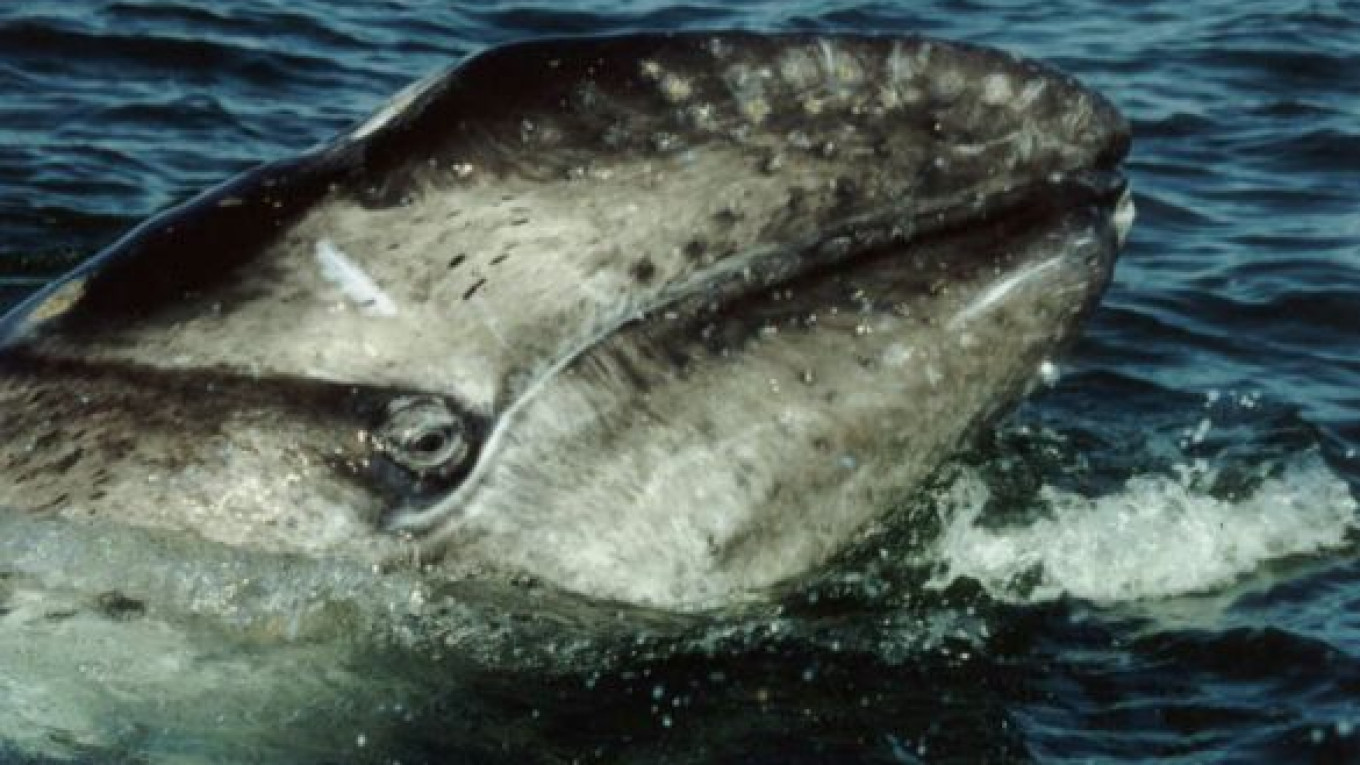ANCHORAGE, Alaska — A highly endangered whale typically seen near Russia's shore is taking a swim across the Bering Sea toward Alaska.
U.S. and Russian researchers are tracking a 13-year-old male western Pacific gray that has made it about three-fourths across the Bering Sea, said Bruce Mate, director of Oregon State University's Marine Mammal Institute.
"I think this animal is probably surprising everybody by having crossed most of the Bering Sea so far in the last two weeks," Mate said.
Scientists can't say the whale is out of place. They don't know where western Pacific gray whales usually are in January.
"That's why we did this," Mate said of the tracking project. "We only really know these animals during their summer feeding season, and they're predominantly around Sakhalin Island at the south end of the Sea of Okhotsk."
Eastern Pacific gray whales, also called California gray whales, are a familiar sight in Alaska's waters. They feed in the Bering, Chukchi and Beaufort seas in the summer and migrate down the West Coast each winter to breed, mostly in the bays of Baja California. They were taken off the endangered species list in 1994. Their population stands at about 18,000, Mate said.
In contrast, western Pacific gray whales are the second-most threatened species of the large whales, behind North Pacific right whales, Mate said, and their population stands at just 130 animals.
"Almost all of those animals are known on sight from photo catalogs, and most of them have been biopsied for genetic analysis," he said.
Western gray whales were decimated by whaling in previous centuries and feared to be extinct in the mid-1970s. A population was rediscovered off Sakhalin Island, north of Japan, and has been monitored since the mid-1990s.
Sakhalin Island is the site of major offshore oil and gas activities. Whales also face threats from accidental entanglement in fishing gear. Five female western gray whales have died by entanglement over the past four years.
Gray whales are the only baleen whales that are mainly bottom feeders, according to the Alaska Department of Fish and Game. They feed by scraping the side of their head along the ocean floor and scooping up sediment, capturing small invertebrates on baleen and expelling sediment and other particles through the baleen fringes.
Gray whales rarely feed while migrating or during the winters in the tropical waters. Instead, they live off fat reserves built up during the summer, when they each eat about 1.3 tons of food per day. A typical male is about 14 meters long.
Mate and others in the research program had hoped to tag a dozen western Pacific gray whales, but two typhoons and two gales interfered.
"We felt pretty lucky when we tagged this animal on the last possible day of our field work," he said.
The whale, dubbed "Flex," was tagged in September with a tracking device the size of a small cigar.
There were hypotheses about where the animals spend their winters.
"One was that it would go down the Asian Coast and perhaps wind up in the southeast China Sea," Mate said. "Another was it might spend time off the Kamchatka Peninsula."
Instead, from about the point where the Aleutian Islands would intersect with Russia's Kamchatka coast, the whale on Jan. 3 began swimming east. By Monday, the whale had covered more than 1,689 kilometers in 238 hours for an average of 7.09 kilometers per hour.
A map of the whale's progress can be viewed at the Oregon State University web site at mmi.oregonstate.edu/Sakhalin2010. It's updated every Monday.
It's not the first time a gray whale has shown up in a surprising place. Gray whales were hunted to extinction in the Atlantic Ocean in the 18th century, but one showed up last year in the Mediterranean Sea off Israel.
"That was definitely the largest straying observation of any whale species in human knowledge to date," Mate said.
It likely was an eastern Pacific whale that crossed by way of the Northwest Passage. That would have been the shortest route and the one most favorable to its feeding regime, Mate said.
A Message from The Moscow Times:
Dear readers,
We are facing unprecedented challenges. Russia's Prosecutor General's Office has designated The Moscow Times as an "undesirable" organization, criminalizing our work and putting our staff at risk of prosecution. This follows our earlier unjust labeling as a "foreign agent."
These actions are direct attempts to silence independent journalism in Russia. The authorities claim our work "discredits the decisions of the Russian leadership." We see things differently: we strive to provide accurate, unbiased reporting on Russia.
We, the journalists of The Moscow Times, refuse to be silenced. But to continue our work, we need your help.
Your support, no matter how small, makes a world of difference. If you can, please support us monthly starting from just $2. It's quick to set up, and every contribution makes a significant impact.
By supporting The Moscow Times, you're defending open, independent journalism in the face of repression. Thank you for standing with us.
Remind me later.






